10 endangered species in Antartica
Antarctic Fur Seal (Arctocephalus gazella), Southern Rockhopper Penguin (Eudyptes chrysocome):
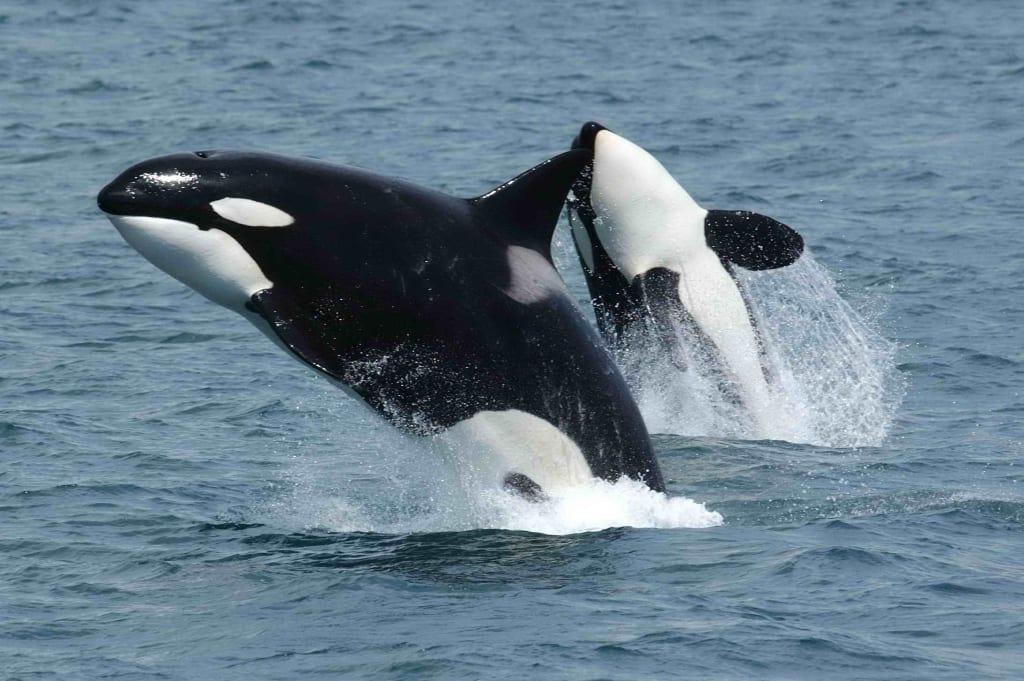
1., Antarctic Blue Whale (Balaenoptera musculus intermedia):
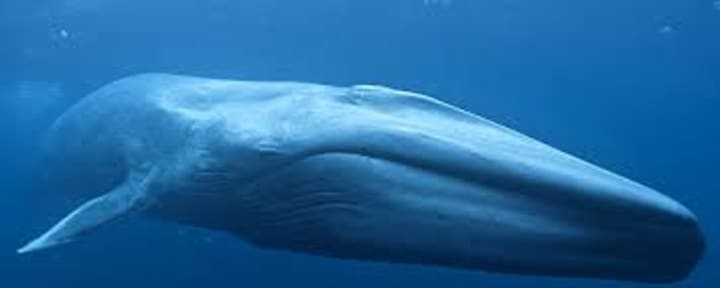
The Antarctic blue whale (Balaenoptera musculus intermedia) is a subspecies of the blue whale and is the largest animal known to have ever existed on Earth. Here are some key details about this endangered species:
Size: Antarctic blue whales can grow up to an impressive length of about 98 feet (30 meters) and weigh around 150 metric tons, with females generally being larger than males.
Distribution: They inhabit the Southern Ocean around Antarctica, particularly during the summer months when they come to feed on massive quantities of krill.
Population Decline: These majestic creatures were heavily targeted by commercial whaling in the past. The population of Antarctic blue whales was drastically reduced due to extensive hunting during the 20th century, pushing them to the brink of extinction.
Conservation Status: The International Union for Conservation of Nature (IUCN) currently lists the Antarctic blue whale as "Endangered" on the Red List of Threatened Species.
Recovery Efforts: Since the international ban on commercial whaling in 1986, the population of Antarctic blue whales has shown signs of recovery, albeit at a slow pace. Conservation measures and protected areas have been established to support their conservation.
Life Cycle: These whales have a long lifespan, estimated to be around 70-90 years. They reach sexual maturity between 10 and 15 years of age and have a gestation period of approximately 10-12 months.
Feeding Habits: Antarctic blue whales primarily feed on tiny shrimp-like crustaceans called krill. They are filter feeders, engulfing large volumes of water and filtering out the krill using baleen plates in their mouths.
Vocalizations: Like other whales, Antarctic blue whales are known for their complex songs and vocalizations. Their low-frequency calls can travel long distances in the ocean, allowing them to communicate and potentially locate mates.
Threats: While hunting has significantly reduced, the Antarctic blue whale population continues to face challenges such as climate change, which impacts the availability of their primary food source, and underwater noise pollution, which interferes with their communication and foraging behaviors.
Research and Monitoring: Scientists and researchers actively study Antarctic blue whales to gain a better understanding of their population dynamics, migration patterns, and behavior. Techniques like acoustic monitoring and satellite tracking are employed to gather data and inform conservation efforts.
Efforts are underway to ensure the long-term survival and recovery of the Antarctic blue whale population through international agreements, protected areas, and continued research and conservation initiatives.
2., Adélie Penguin (Pygoscelis adeliae):
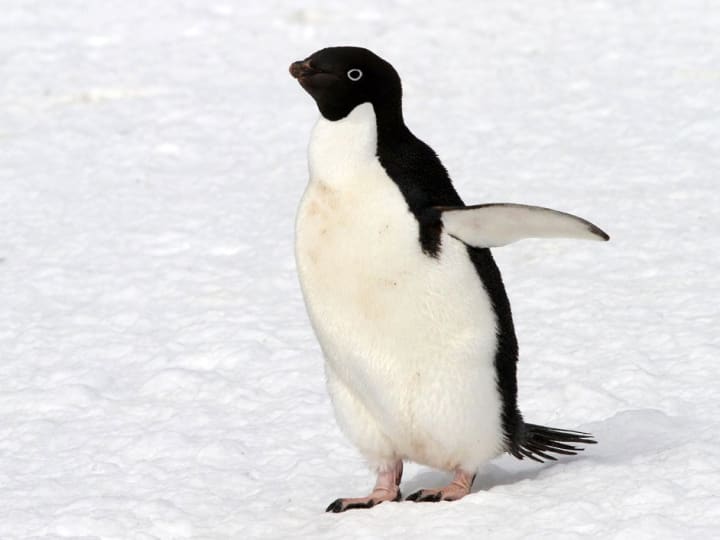
The Adélie penguin (Pygoscelis adeliae) is a species of penguin that inhabits the coastal regions of Antarctica. Here are some details about this fascinating bird:
Appearance: Adélie penguins are small to medium-sized penguins, with adults typically measuring about 18 to 28 inches (46 to 71 centimeters) in height and weighing around 8 to 11 pounds (3.6 to 5 kilograms). They have a black head and back, white belly, and distinctive white eye rings.
Distribution: Adélie penguins are found along the entire coastline of Antarctica. They breed on ice-free rocky areas, often forming large colonies that can number in the thousands or even millions of individuals.
Adaptations to the Environment: These penguins have several adaptations that allow them to survive in the harsh Antarctic environment. They have a thick layer of blubber and dense feathers that provide insulation against the extreme cold. Their streamlined bodies and flipper-like wings enable them to swim swiftly through the water.
Diet: Adélie penguins are primarily krill feeders. They feed on small shrimp-like crustaceans, fish, and squid. They are excellent divers and can plunge into the water to depths of around 500 feet (150 meters) to catch their prey.
Breeding Behavior: Adélie penguins are known for their elaborate breeding rituals. During the Antarctic summer (November to February), they build nests out of stones, which they collect from the surroundings. Males present these pebbles to females as part of their courtship displays. Both parents take turns incubating the eggs and caring for the chicks.
Population: Adélie penguins are abundant and have a large population, estimated to be around 5 million breeding pairs. However, certain colonies have experienced population declines due to changes in sea ice patterns, predation, and human disturbance.
Climate Change Impact: Adélie penguins depend on sea ice for various aspects of their life cycle, including access to food and nesting sites. Climate change and the reduction in sea ice extent have had significant impacts on their population dynamics, affecting their foraging patterns and reproductive success.
Threats: Besides climate change, Adélie penguins face threats from human activities such as fishing, pollution, and disturbance caused by tourism and research activities. Increased competition for food resources due to expanding krill fisheries can also pose a challenge to their survival.
Conservation Status: The IUCN lists Adélie penguins as "Least Concern" on the Red List of Threatened Species, indicating that the overall population is currently stable. However, specific colonies may face localized threats and decline.
Research and Conservation Efforts: Scientists study Adélie penguins to monitor population trends, understand their behavior, and assess the impacts of environmental changes. Conservation measures include the establishment of protected areas, regulation of fishing activities, and guidelines for responsible tourism to minimize disturbances to their breeding colonies.
Adélie penguins are iconic Antarctic inhabitants, known for their resilience and distinctive appearance. Continued conservation efforts are crucial to safeguard their populations and preserve the delicate balance of Antarctica's ecosystems.
3., Weddell Seal (Leptonychotes weddellii):

The Weddell seal, scientifically known as Leptonychotes weddellii, is a species of seal native to the waters surrounding Antarctica. Here's some information about the Weddell seal:
Appearance: Weddell seals are the southernmost breeding mammal species and are the most southerly distributed of all seals. They have a robust, barrel-shaped body with a small head and short, broad flippers. Adult males can reach lengths of up to 3.5 meters (11.5 feet) and weigh around 500 to 600 kilograms (1,100 to 1,300 pounds), while adult females are slightly smaller.
Coloration: Their fur is generally dark gray to brown on the back and lighter silver-gray on the belly. They have a spotted pattern on their back, which helps them blend in with the mottled sea ice of their habitat.
Habitat: Weddell seals primarily inhabit the pack ice and fast ice regions surrounding Antarctica, including areas along the Antarctic Peninsula and the Ross Sea. They are highly adapted to the cold, harsh environment and spend a significant portion of their lives in and around the water.
Behavior: These seals are known for their ability to remain submerged for long periods. They can stay underwater for up to 45 minutes, reaching depths of 600 meters (1,970 feet). Weddell seals are excellent divers and have physiological adaptations that allow them to tolerate the extreme cold and pressure underwater.
Diet: The Weddell seal's diet mainly consists of fish, squid, and various species of Antarctic krill. They are also known to feed on other invertebrates and even small penguins.
Reproduction: Weddell seals are known for their unique breeding strategy. They create breeding lairs in the sea ice, where females give birth to a single pup. The pups are nursed for around six weeks before they are weaned. Breeding occurs during the Antarctic spring, usually in October and November.
Conservation status: The Weddell seal is currently listed as a species of "Least Concern" by the International Union for Conservation of Nature (IUCN). However, like other Antarctic species, they face potential threats from climate change, including changes in sea ice patterns and availability of prey. Scientific monitoring and research efforts continue to assess their population status and understand the impacts of environmental changes on their long-term survival.
The Weddell seal is a fascinating species that has adapted to survive in one of the most extreme environments on Earth. Its unique characteristics and behaviors make it an important part of the Antarctic ecosystem.
4., Antarctic Fur Seal (Arctocephalus gazella):
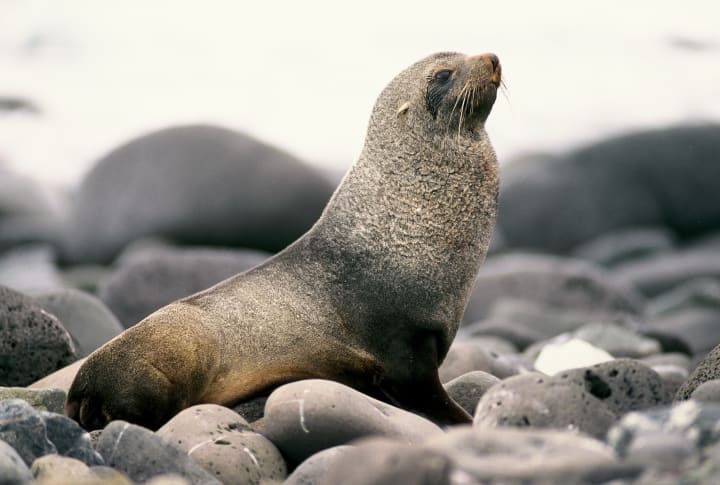
The Antarctic Fur Seal (Arctocephalus gazella) is a species of fur seal that is native to the southern waters of the Southern Ocean and the sub-Antarctic islands. It is one of eight species of fur seals and is characterized by its dense, luxurious fur and robust body shape. Here are some details about the Antarctic Fur Seal:
Appearance:
Antarctic Fur Seals are sexually dimorphic, meaning males and females have different physical characteristics. Adult males, known as bulls, are much larger than females, called cows. Bulls can reach a length of about 2.5 meters (8 feet) and weigh up to 200 kilograms (440 pounds). They have a thick neck and chest, a large head with a distinct pointed snout, and a thick mane of coarse dark brown or grayish-brown hair that extends from the head to the shoulders. The rest of their body is covered with shorter, sleeker fur that varies in color from brownish-gray to light gray. Females are significantly smaller, measuring about 1.5 meters (5 feet) in length and weighing around 40-50 kilograms (88-110 pounds). Their fur is lighter in color, ranging from light brown to silver-gray.
Habitat:
Antarctic Fur Seals inhabit the Antarctic and sub-Antarctic regions, primarily in areas with rocky shores and beaches. They can be found on various islands, including South Georgia, South Orkney, and South Sandwich Islands, as well as the Kerguelen Islands and Heard Island. These seals prefer beaches with easy access to the ocean and areas that provide protection from strong winds and waves.
Behavior:
Antarctic Fur Seals are highly social animals and form large breeding colonies during the mating season. Males establish territories and defend them vigorously from other males. The breeding season occurs in November and December, during which males compete for dominance and mating rights. They use vocalizations, posturing, and physical combat to establish their status. Females give birth to a single pup, usually within a few days of arriving at the breeding grounds. Pups are born with a dark brown coat, which molts into a lighter fur after a few months.
Diet:
These fur seals are opportunistic feeders and have a diverse diet. They primarily consume fish, such as lanternfish, myctophids, and icefish. They also eat krill, squid, and various other marine invertebrates. Antarctic Fur Seals are known for their efficient diving abilities, reaching depths of up to 200 meters (650 feet) and remaining submerged for several minutes while foraging.
Conservation status:
The Antarctic Fur Seal was once heavily hunted for its valuable fur during the 18th and 19th centuries. These hunting practices greatly depleted their population, but conservation efforts and international protection measures have helped the species recover. Currently, the Antarctic Fur Seal is listed as a species of Least Concern by the International Union for Conservation of Nature (IUCN). However, ongoing monitoring and conservation efforts are necessary to ensure the long-term survival of the species in its natural habitat.
Overall, the Antarctic Fur Seal is a remarkable marine mammal that has adapted to survive in the harsh and frigid Antarctic environment. With its distinctive appearance and fascinating social behavior, it remains an important and captivating species of the Southern Ocean.
5., Southern Rockhopper Penguin (Eudyptes chrysocome):
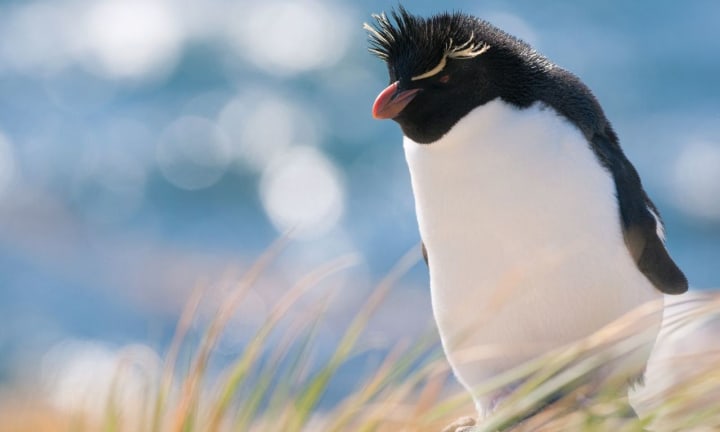
The Southern Rockhopper Penguin (Eudyptes chrysocome) is a species of penguin that inhabits the sub-Antarctic islands in the southern parts of the Atlantic and Indian Oceans. It is one of three rockhopper penguin species, with the others being the Northern Rockhopper Penguin and the Eastern Rockhopper Penguin. Here are some details about the Southern Rockhopper Penguin:
Appearance:
Southern Rockhopper Penguins are small to medium-sized penguins, measuring about 45 to 58 centimeters (18 to 23 inches) in height and weighing around 2.5 to 4 kilograms (5.5 to 8.8 pounds). They have a distinctive appearance characterized by their spiky yellow feathers on the top of their head, bright red eyes, and a black crest of feathers that extends from their forehead to the back of their neck. Their upperparts are mostly black, while their underparts are white. They have short wings and strong, webbed feet that are pink in color.
Habitat:
These penguins breed on various sub-Antarctic islands, including the Falkland Islands, South Georgia, the Prince Edward Islands, the Crozet Islands, and the Kerguelen Islands. They prefer rocky coastal areas and steep slopes, often nesting in colonies on cliffs or rocky ledges close to the shore. Outside of the breeding season, they can be found at sea, ranging over a wide area in search of food.
Behavior:
Southern Rockhopper Penguins are known for their unique and distinctive hopping behavior, which earned them their name. They use their strong legs and feet to hop from one rock to another while navigating their rocky habitats. They are excellent swimmers and divers, using their wings as flippers to propel themselves through the water. They can dive to depths of up to 100 meters (330 feet) and stay submerged for several minutes while foraging for food.
Breeding and Reproduction:
Breeding colonies of Southern Rockhopper Penguins can consist of thousands of pairs. They typically breed in dense vegetation or rocky burrows, which provide protection and insulation for their nests. Breeding pairs engage in elaborate courtship displays, involving head bobbing, calling, and mutual preening. The female lays two eggs, but only one chick usually survives due to limited resources. Both parents take turns incubating the eggs and caring for the chick, with shifts lasting several days. The chicks fledge and leave the colony after about 75 to 85 days.
Diet:
Southern Rockhopper Penguins primarily feed on krill, a small shrimp-like crustacean, but they also consume a variety of other small marine creatures, including fish and squid. They forage by diving underwater and using their beaks to catch their prey. They are agile and can swim swiftly, enabling them to chase and capture their food.
Conservation Status:
The Southern Rockhopper Penguin is classified as Vulnerable by the International Union for Conservation of Nature (IUCN). The species has experienced significant population declines in recent years, primarily due to habitat degradation, overfishing of their prey, and the impact of climate change on their feeding grounds. Conservation efforts are focused on protecting their breeding colonies, monitoring their populations, and mitigating the threats they face.
The Southern Rockhopper Penguin is a captivating and resilient species that has adapted to the challenging sub-Antarctic environment. With its unique appearance and fascinating behaviors, it remains an iconic representative of the diverse and fragile Antarctic ecosystem.
6., Ross Sea Killer Whale (Orcinus orca):

Antarctic Type C Killer Whale:
In the Ross Sea region of Antarctica, there is a distinct population of killer whales known as the Antarctic Type C Killer Whale or Ross Sea Killer Whale. This population is known for its unique physical appearance and specialized feeding behavior.
Appearance:
Antarctic Type C Killer Whales have a striking appearance with a predominantly black body and a large, white eye patch. They have a robust body shape and can reach lengths of up to 7 to 8 meters (23 to 26 feet) in adulthood. Their dorsal fin is tall and triangular, and they have a grayish saddle patch behind the dorsal fin.
Feeding Behavior:
The Ross Sea Killer Whales have specialized feeding behavior, primarily targeting Antarctic toothfish (Dissostichus mawsoni). They are known to cooperatively hunt and use a technique called "wave-hunting" or "carousel feeding." This involves creating a wave or wall of water to dislodge fish from an ice floe or to wash them off an ice shelf, making it easier for the killer whales to capture their prey.
Habitat:
The Ross Sea Killer Whales inhabit the icy waters of the Ross Sea in Antarctica, particularly around the edges of the sea ice and areas where Antarctic toothfish are found. They are known to follow and exploit the movements of the toothfish, which are a primary food source for this population.
Conservation Status:
Due to the limited research on this specific population, the conservation status of the Ross Sea Killer Whale or Antarctic Type C Killer Whale is currently unknown. However, the Antarctic marine ecosystem, including its top predators like killer whales, faces threats such as climate change, loss of sea ice, and overfishing. Conservation efforts in the region aim to protect and preserve the unique and fragile Antarctic ecosystem as a whole.
It's important to note that as scientific understanding evolves, taxonomic classifications and population distinctions may change. Ongoing research is crucial to gaining a comprehensive understanding of the different populations of killer whales, including those found in the Ross Sea region.
7. South Georgia Pipit (Anthus antarcticus):

The South Georgia Pipit (Anthus antarcticus) is a small passerine bird that is endemic to the remote sub-Antarctic island of South Georgia. It is the only bird species that breeds on the island, making it particularly unique and significant in terms of the island's avian diversity. Here are some details about the South Georgia Pipit:
Appearance:
The South Georgia Pipit has a relatively plain and unassuming appearance. It has a slender body with a length of about 18 centimeters (7 inches) and weighs around 30 grams (1 ounce). The plumage of adults is generally brown, blending well with the rocky and grassy habitats of the island. They have a whitish underside with subtle streaking on the breast and flanks. The bill is thin and pointed, and the legs are pale pink or flesh-colored.
Habitat:
This pipit species is restricted to the rugged, mountainous terrain of South Georgia Island. It inhabits a variety of habitats, including coastal areas, grassy slopes, and rocky terrain. It is commonly found near the shoreline and often ventures onto beaches and grassy tussocks. The birds are adapted to the challenging sub-Antarctic climate, including strong winds, freezing temperatures, and snowfall.
Behavior:
South Georgia Pipits are known for their terrestrial behavior, spending most of their time on the ground. They are agile walkers and runners, often seen hopping and foraging among the rocks and grass. They have a distinct and melodious song, consisting of a series of trills and warbles, which they use to establish territories and attract mates. During the breeding season, they become more vocal and engage in courtship displays.
Breeding:
Breeding for the South Georgia Pipit takes place from November to February. The birds form monogamous pairs and build cup-shaped nests on the ground, usually hidden among grasses or under rocks. The female lays a clutch of two to three eggs, which are incubated by both parents for about two weeks. After hatching, both parents share the responsibility of feeding and caring for the chicks until they fledge, which occurs at around three weeks of age.
Diet:
The South Georgia Pipit is primarily insectivorous, feeding on a variety of invertebrates, including beetles, flies, spiders, and larvae. It also consumes small seeds and plant matter when insects are less abundant. The birds forage by pecking and probing the ground and using their pointed bills to extract prey from crevices and vegetation.
Conservation Status:
The South Georgia Pipit is listed as Vulnerable by the International Union for Conservation of Nature (IUCN) due to its limited range and potential threats. Introduced predators, such as rats and mice, pose a significant risk to the breeding success of the pipits. Conservation efforts on South Georgia Island include habitat restoration, rat eradication programs, and ongoing monitoring of the population.
The South Georgia Pipit is an important and endemic species that plays a vital role in the ecological balance of South Georgia Island. Its survival and conservation are essential for maintaining the unique biodiversity of this remote sub-Antarctic region.
8., Antarctic Petrel (Thalassoica antarctica):

The Antarctic Petrel (Thalassoica antarctica) is a seabird species that breeds in the Southern Ocean and Antarctic regions. It is one of the few bird species that calls Antarctica its home. Here are some details about the Antarctic Petrel:
Appearance:
The Antarctic Petrel is a medium-sized seabird, measuring about 40 to 50 centimeters (16 to 20 inches) in length. It has a dark brownish-black plumage with a paler grayish-white underbelly. The bird has a sturdy body, a large head, and a hooked, pale yellow bill. Its wings are long and narrow, suited for soaring and gliding over the ocean. During flight, the Antarctic Petrel displays a distinct white diagonal stripe across the top side of its wings, which is a key identification feature.
Habitat:
As their name suggests, Antarctic Petrels are primarily found in the Antarctic and sub-Antarctic regions, including the Southern Ocean. They breed on the Antarctic continent itself, as well as on nearby islands such as South Georgia, South Sandwich Islands, and the South Orkney Islands. Outside of the breeding season, they can be found over the open ocean, often venturing northward into the sub-Antarctic waters.
Behavior:
Antarctic Petrels are highly adapted to life at sea. They are skilled flyers and spend a significant amount of time soaring above the water, using air currents to their advantage. They are known to travel long distances in search of food, often following ships or foraging around krill swarms, their primary food source. They are also strong divers, capable of diving to considerable depths to catch prey.
Breeding:
Breeding colonies of Antarctic Petrels are typically found on coastal slopes and cliffs, where they create burrows for nesting. These burrows offer protection from the harsh Antarctic weather conditions. Breeding occurs during the Antarctic summer, with pairs forming long-lasting bonds. The female lays a single egg, which is incubated by both parents for approximately 45 days. After hatching, the chick is cared for by both parents, who take turns foraging for food and returning to the nest.
Diet:
The diet of the Antarctic Petrel primarily consists of krill, a small shrimp-like crustacean that is abundant in the Southern Ocean. They also consume other small fish, squid, and marine invertebrates. They are skilled foragers, using their sharp beaks to snatch prey from the water's surface or by diving and pursuing prey underwater.
Conservation Status:
The Antarctic Petrel is classified as a species of Least Concern by the International Union for Conservation of Nature (IUCN) due to its relatively large population and widespread distribution. However, its breeding colonies are vulnerable to disturbance from human activities, such as tourism and research activities in Antarctica. Conservation efforts are focused on monitoring the species' population trends, protecting its breeding habitats, and promoting responsible tourism practices in the region.
The Antarctic Petrel is an iconic seabird of the Southern Ocean, perfectly adapted to the harsh conditions of the Antarctic environment. Its presence contributes to the unique and fragile ecosystem of the region, highlighting the importance of conservation efforts to preserve its habitat and ensure its long-term survival.
9., Emperor Penguin (Aptenodytes forsteri):
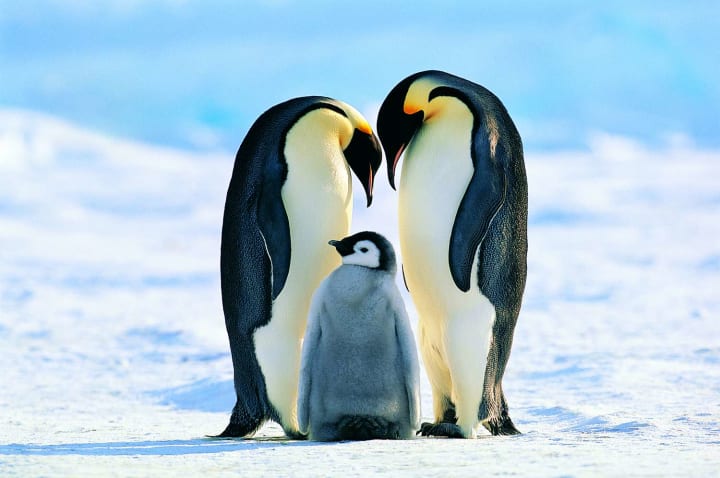
The Emperor Penguin (Aptenodytes forsteri) is the largest species of penguin and is known for its distinctive appearance and fascinating behaviors. Here's some information about Emperor Penguins:
Physical Description: Emperor Penguins are easily recognized by their black and white plumage. They have a white belly and a black back, head, and wings. Adult Emperor Penguins can reach a height of about 3.7 feet (1.1 meters) and weigh between 49 and 99 pounds (22 to 45 kilograms), with males being slightly larger than females.
Distribution: Emperor Penguins are native to Antarctica and are the only penguin species that breeds exclusively on the continent. They are found along the coast and on the surrounding ice shelves.
Adaptations to the Cold: Emperor Penguins are superbly adapted to survive in the harsh Antarctic environment. They have a thick layer of blubber that provides insulation and helps them stay warm. Additionally, they have a dense layer of feathers that traps air close to their bodies, providing further insulation. Emperor Penguins are also capable of reducing blood flow to their extremities to minimize heat loss.
Breeding and Reproduction: Emperor Penguins have a unique breeding cycle. They gather in large colonies on the sea ice during the Antarctic winter, which is the breeding season. Males and females come together to mate and then the female lays a single egg, which is incubated by the male. The males carefully balance the egg on their feet and cover it with a brood pouch to protect it from the extreme cold. During this period, the males do not eat and rely on their energy reserves. After around 63 to 67 days, the female returns from the sea with food for the chick, and the parents take turns feeding and caring for it until it can fend for itself.
Feeding Habits: Emperor Penguins primarily feed on fish, krill, and squid, which they catch by diving into the icy waters of the Southern Ocean. They can dive to depths of over 1,500 feet (457 meters) and hold their breath for up to 20 minutes. They have special adaptations that allow them to survive and thrive in these extreme diving conditions.
Conservation Status: The Emperor Penguin population is currently classified as near threatened by the International Union for Conservation of Nature (IUCN). While they face threats such as climate change, loss of sea ice habitat, and disturbance from human activities, they benefit from legal protection within Antarctic treaty areas.
Emperor Penguins are remarkable creatures that have evolved to survive in one of the harshest environments on Earth. Their unique breeding and parenting behaviors, along with their incredible adaptations, make them a subject of great interest and admiration.
10., Antarctic Toothfish (Dissostichus mawsoni):

The Antarctic Toothfish (Dissostichus mawsoni) is a species of fish that inhabits the cold, deep waters of the Southern Ocean around Antarctica. Here's some information about the Antarctic Toothfish:
Physical Description: The Antarctic Toothfish is a large, deep-water fish with a distinctive appearance. It has a sleek, elongated body with a silvery-gray to dark brown coloration. It can grow to be quite large, reaching lengths of up to 7 feet (2.1 meters) and weighing over 200 pounds (90 kilograms). One of its notable features is its large mouth with sharp, predatory teeth, which gives it its name.
Distribution: The Antarctic Toothfish is found in the Southern Ocean surrounding Antarctica, particularly in the waters of the Antarctic continental shelf and slope. It is a cold-water species that inhabits depths ranging from 330 to 6,560 feet (100 to 2,000 meters).
Life Cycle and Reproduction: Not much is known about the specific life cycle and reproduction of the Antarctic Toothfish due to the challenges of studying deep-sea species. However, it is believed to be a slow-growing and long-lived species, with individuals potentially reaching ages of 40 years or more. They are thought to reach sexual maturity at around 10 to 12 years of age.
Diet and Feeding Habits: The Antarctic Toothfish is a carnivorous predator that feeds on a variety of prey, including fish, squid, and krill. It is an opportunistic feeder, taking advantage of available food sources in its deep-sea habitat. Its large mouth and sharp teeth are well-adapted for capturing and consuming its prey.
Conservation Status: The Antarctic Toothfish has been a subject of concern due to overfishing and illegal, unregulated, and unreported (IUU) fishing activities. It is a commercially valuable species and is highly sought after for its high-quality flesh, often referred to as "Chilean sea bass" in the culinary market. Efforts have been made to regulate fishing activities and prevent illegal fishing through measures such as fishing quotas, vessel monitoring systems, and catch documentation schemes.
It's worth noting that due to the vulnerability of deep-sea ecosystems and the challenges associated with studying deep-sea species, there is still much to learn about the Antarctic Toothfish and its ecological role in the Southern Ocean. Conservation measures and sustainable fishing practices are important for the long-term preservation of this species and the marine ecosystem it inhabits.
About the Creator
Enjoyed the story? Support the Creator.
Subscribe for free to receive all their stories in your feed. You could also pledge your support or give them a one-off tip, letting them know you appreciate their work.




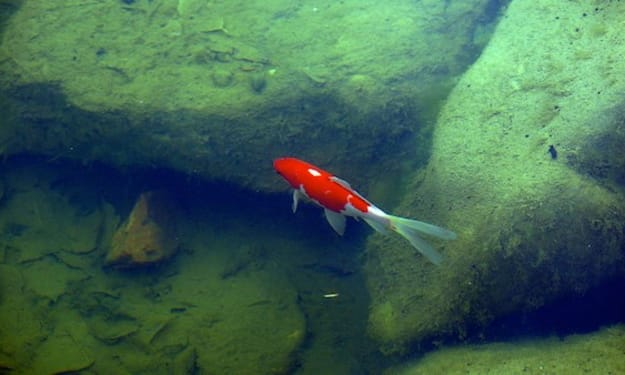

Comments
There are no comments for this story
Be the first to respond and start the conversation.